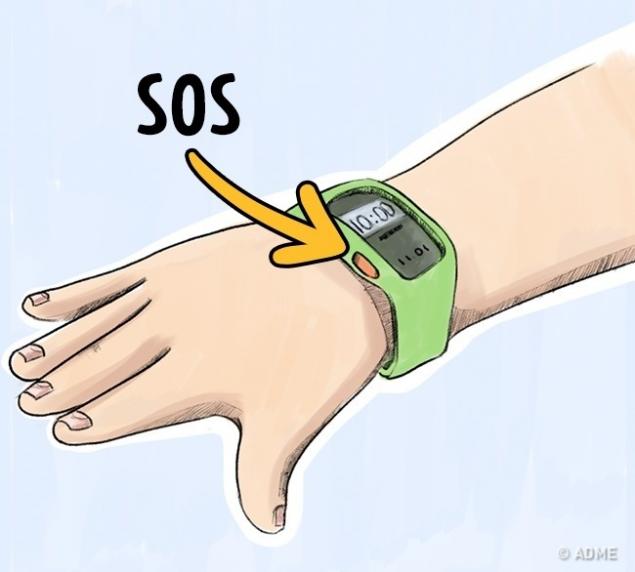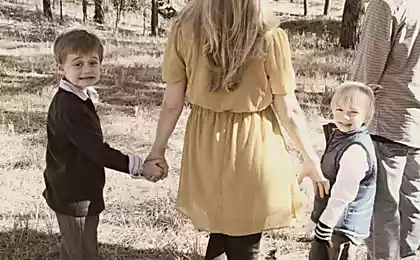152
10 useful tips that will protect your child

Before giving the child independence, you need to take care of his safety.
Today. Website Learn how to teach your child how to deal with strangers. You can show these illustrations to your child and discuss dangerous situations with them.
Hide name and surname

Don’t write your child’s name on your belongings.Do not hang personal keychains on a children's backpack, do not sign a lunch box or a thermos. So his name can be recognized by someone else. If a stranger addresses a child by name, he immediately inspires his trust and can further manipulate the baby.
Write your phone on the tag in case something gets lost.
Run away from cars in the opposite direction

We're teaching kids not to get in a car with strangers -- that's right. Let the child learn another rule: if a car brakes near him or she is driving after him, and someone from the car wants to attract his attention, you need to quickly run away in the opposite direction of the car. This will help your child gain time and seek help.
Create a family password

If a stranger invites a child to go where his mother or father is waiting for him, let the child ask him to give his parents names and password. Think together with the child codephrase For an emergency, if you suddenly ask someone you know to pick up a child from kindergarten or school. The password should be unexpected so that it can not be guessed: for example, “fluffy orange”.
Install tracking applications

Thanks to the GPS sensor, the app shows the coordinates of your child and the battery level of his phone.
- Life360 Locator iOS | Android
- GPS Phone Tracker iOS | Android

Gadgets with an alarm button are in the form of a watch, key fob, bracelet or medallion. Parents through a special mobile application can constantly monitor the location of the child, and if he presses a button, the signal is received by parents or security services.
- BuddyTag
- Major-GSM Panic

Tell your child that if he is grabbed by a stranger, you can and should be “bad”: bite, kick, scratch and attract attention at any cost, even if very scary. You have to shout out loud, “I don’t know him!” He wants to take me away!
Stop talking and keep your distance

The child should be aware that strangers can chat not only children, but also adults, so it is important to quickly go to a safe place within 5-7 seconds after starting a conversation. You should stand at a distance of 2-2.5 meters from a stranger; if he approaches, you should take a step back. Rehearse this situation with the child, show a distance of 2 meters and warn that during the conversation it should be saved.
Do not enter the elevator with strangers

Teach your child to wait for the elevator with his back to the wall so that he can see everyone who approaches him. And if it is a stranger or someone unfamiliar, under any pretext, do not go into the elevator with him: pretend that he forgot something, or go to the mailbox. If someone invites you to come in, the best option is to politely reply that parents only allow you to ride in the elevator alone or with neighbors. If a stranger tries to drag him into an elevator or hold his mouth, he must fight, shout and bite.
Don't say parents aren't home

If the question “Who is there?” no one answers or no one is visible in the eye, you can not open the door even a little to see who it is. You can’t say that the parents aren’t home, even if the stranger is their friend or utility worker. If he is very persistent and breaks into the apartment, you need to urgently call your parents or neighbors.
Do not meet with Internet acquaintances

Warn your child that in today’s world, criminals can find their victim online, and it’s not always “Misha from the Next House” that’s really a neighborhood 10-year-old boy. Innocuous correspondence can be conducted by a dangerous person. Explain that you can not tell strangers, even children, your phone, address, surname, send photos and tell when and where you like to walk. And especially not to agree to a walk with a stranger.
See also.
Every 8 minutes a child is injured by a child’s product.
8 principles of child safety from Dr. Roshal
via www.adme.ru/zhizn-nauka/8-principov-detskoj-bezopasnosti-ot-doktora-roshalya-1449815/
These 8 myths about dental care are harmful to our health
12 improvisations, which entered the history of cinema
























